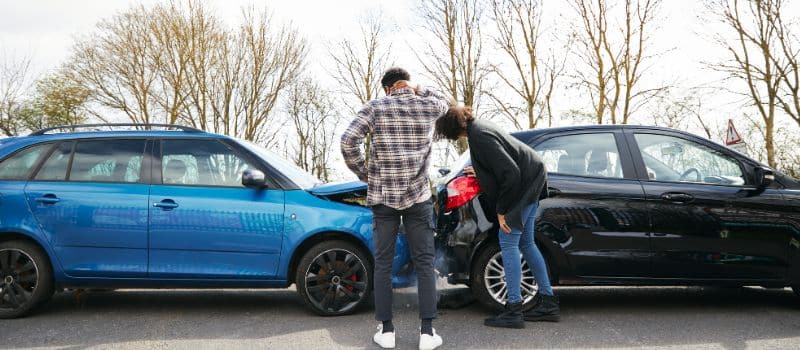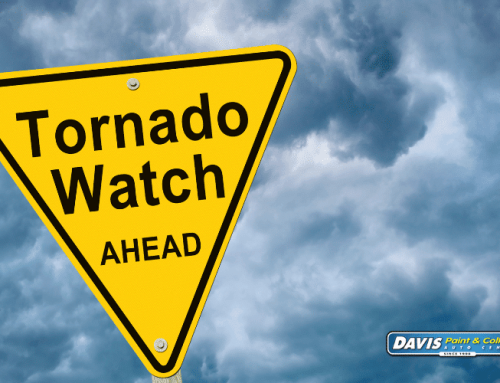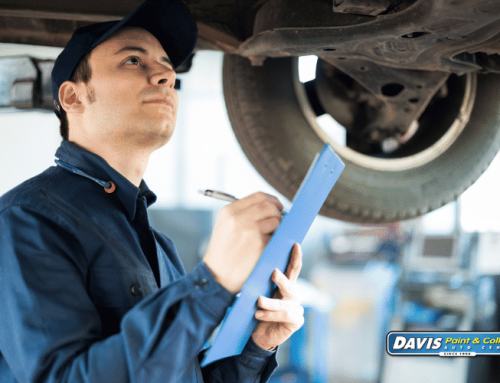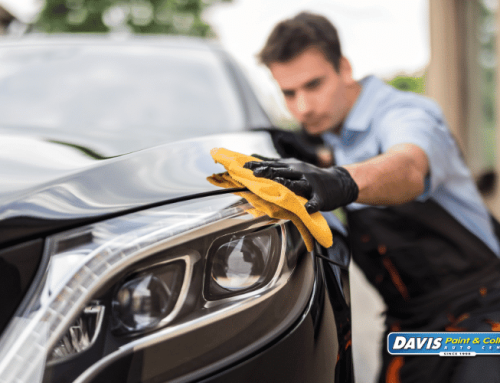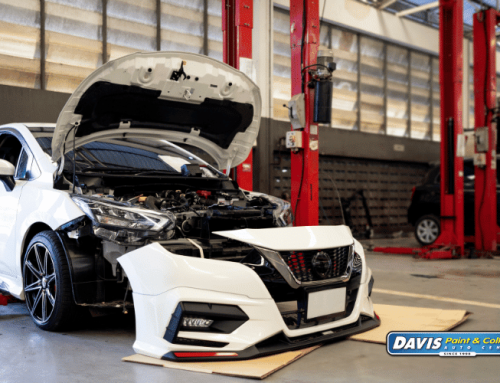Accidents happen when you least expect them, and in the aftermath, it’s essential to ensure the safety and integrity of your vehicle. Inspecting your car after an accident is crucial, whether it is a minor fender bender or a more significant collision.
At Davis Paint & Collision Auto Center, we understand the concerns that follow an accident, and we’re here to guide you through inspecting your car and ensuring it’s roadworthy. In this comprehensive guide, we’ll provide valuable tips for conducting a post-accident car inspection and share insights to help you make informed decisions about necessary repairs.
Immediate Safety Concerns
Immediately after an accident, all parties’ safety should be the top priority. Check for any injuries and call for medical assistance if required. If everyone is safe, follow these steps:
- Turn on hazard lights: Once it’s clear that there are no immediate injuries or once injured parties are receiving medical care, activate your vehicle’s hazard lights. This helps alert other drivers to the accident scene and reduces the risk of further collisions.
- Move to a safe location: If possible, move your vehicle to the side of the road or a safe area to avoid additional accidents.
- Call the authorities: Contact the local police to report the accident and, if necessary, request medical assistance.
Assessing Visible Damage
After ensuring the immediate safety of all parties involved, examining your vehicle for any visible damage is crucial. This step is essential for both your safety and any potential insurance claims. Here’s a more detailed breakdown:
- Examine the exterior: Check for dents, scratches, and body damage. Take photos for your insurance claim.
- Inspect the lights: Ensure all lights, including headlights, taillights, and turn signals, are functional.
- Check the tires: Inspect tires for damage or punctures. Ensure they are correctly inflated.
Open the Hood
Pop the hood and conduct a thorough inspection of the engine compartment. This step is crucial as it helps you determine the extent of potential damage and identifies any fluid leaks or other issues that may not be immediately visible.
- Engine compartment: Inspect for visible damage or signs of coolant, oil, or brake fluid leaks.
- Fluid levels: Check fluid levels, including engine oil, coolant, brake fluid, and windshield washer fluid.
- Battery: Look for visible damage to the battery or any loose connections.
Undercarriage Inspection
When inspecting your vehicle’s undercarriage, looking for signs of damage or irregularities is essential. Even seemingly minor damage to the undercarriage can lead to significant issues if addressed. Here’s what to check for:
- Check for fluid leaks: Look for signs of leaking fluids, which could indicate damage to the fuel or brake lines.
- Examine the exhaust system: Ensure the exhaust system is intact and not dragging on the ground.
Interior Inspection
When inspecting your vehicle’s interior after an accident, it’s essential to pay close attention to various aspects for your safety and your vehicle’s proper functioning.
- Airbags: Inspect deployed airbags carefully. Ensure they are inflated correctly and show no damage. A qualified technician must replace damaged or improperly deployed airbags.
- Safety belts: Check seatbelts for damage or malfunction.
- Functionality of controls: Test the functionality of various controls, including the steering wheel and pedals.
Driveability Test
Taking your vehicle for a short drive is critical in assessing its post-accident condition. Here’s what to focus on during this driveability test:
- Alignment and handling: Pay close attention to the vehicle’s alignment and handling. Does the car pull to one side? Is the steering wheel centered, or does it vibrate excessively? These issues could indicate alignment problems or damage to the suspension components.
- Unusual noises: Listen for strange noises, which may indicate underlying issues.
Conclusion: Trusting Your Car’s Recovery to Davis Paint & Collision Auto Center
Your vehicle’s safety and condition are of utmost importance after an accident. While these tips for inspecting your car after an accident can help you identify visible damage, remember that some issues may not be immediately apparent. It’s advisable to have your vehicle professionally inspected by experts like the “DAVIS Paint & Collision team.” We specialize in collision repair and auto painting, and our skilled technicians can conduct a thorough assessment to ensure your vehicle is safe and roadworthy.
If you have any questions or concerns or need our services, please don’t hesitate to contact Davis Paint & Collision Auto Center We are ready to assist you in any way we can. Safe travels!


